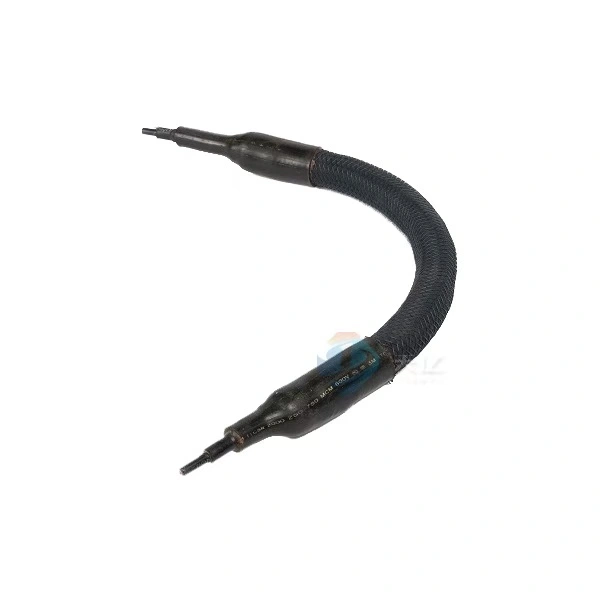The Simple Guide to Installing Flexible Linear Anodes
Flexible linear anodes have revolutionized corrosion protection in various industries, offering a versatile and efficient solution for safeguarding infrastructure. Whether you're a seasoned professional or new to the world of cathodic protection, this comprehensive guide will walk you through the process of installing flexible linear anodes. By the end of this article, you'll have a solid understanding of the installation procedure, best practices, and key considerations to ensure optimal performance.

Comprehending Flexible Linear Anodes: A Brief Overview
Before diving into the installation process, it's crucial to grasp the fundamentals of flexible linear anodes. These innovative corrosion protection devices consist of a continuous, flexible wire or strip coated with a highly conductive material, typically mixed metal oxide (MMO). The flexibility of these anodes allows for easy installation in various configurations, making them ideal for protecting complex structures, pipelines, and reinforced concrete.
Flexible linear anodes offer several advantages over traditional rigid anodes, including:
- Ease of installation in tight spaces and around curved surfaces
- Uniform current distribution along the entire length of the anode
- Reduced installation time and labor costs
- Improved durability and longevity
- Adaptability to various environmental conditions
Preparation and Planning: Setting the Stage for Success
Proper preparation is paramount to ensuring a successful installation of flexible linear anodes. This phase involves several critical steps:
1. Site Assessment: Begin by thoroughly evaluating the installation site. Consider factors such as soil resistivity, moisture content, and potential interference from nearby structures or electrical sources. This assessment will help determine the optimal anode placement and configuration.
2. Design and Layout: Based on the site assessment, create a detailed design plan that outlines the anode layout, spacing, and connections. Take into account the structure's geometry, anticipated current requirements, and any potential obstacles that may affect installation.
3. Material Selection: Choose the appropriate flexible linear anode type and accessories based on your specific application. Consider factors such as the required current output, environmental conditions, and expected service life. Consult with manufacturers or corrosion protection specialists to ensure you select the most suitable materials for your project.
4. Safety Considerations: Develop a comprehensive safety plan that addresses potential hazards associated with the installation process. This may include electrical safety protocols, personal protective equipment requirements, and procedures for working in confined spaces or at heights.
5. Permits and Approvals: Obtain all necessary permits and approvals from relevant authorities before commencing the installation. This may include environmental permits, right-of-way access, or compliance with local regulations.
6. Tool and Equipment Preparation: Gather all required tools and equipment, ensuring they are in good working condition. This may include cutting tools, connection hardware, testing equipment, and any specialized installation tools recommended by the anode manufacturer.
Installation Process: Bringing Your Corrosion Protection System to Life
With thorough preparation complete, it's time to proceed with the installation of your flexible linear anodes. Follow these steps to ensure a successful implementation:
1. Surface Preparation: Clean and prepare the surface where the anodes will be installed. Remove any dirt, debris, or corrosion products that may interfere with proper anode contact. For concrete structures, this may involve surface grinding or sandblasting to expose clean, sound concrete.
2. Anode Placement: Carefully unroll the flexible linear anode along the predetermined path, following your design layout. Use temporary fasteners or adhesive tape to hold the anode in place during installation. Ensure the anode maintains consistent contact with the surface it's protecting.
3. Securing the Anode: Permanently secure the flexible linear anode using appropriate fasteners or anchoring systems. The specific method will depend on the substrate material and environmental conditions. Common techniques include:
- Concrete anchors or expansion bolts for reinforced concrete structures
- Mesh overlay systems for complex geometries
- Specialized clamps or straps for pipeline applications
4. Electrical Connections: Establish reliable electrical connections between the flexible linear anodes and the power source or junction box. Use high-quality, corrosion-resistant connectors and ensure all connections are properly insulated to prevent moisture ingress.
5. Continuity Testing: Perform continuity tests to verify that the anode is properly connected and there are no breaks or discontinuities along its length. Use a multimeter or specialized testing equipment to measure resistance and identify any potential issues.
6. Junction Box Installation: If required by your design, install junction boxes to facilitate future monitoring and maintenance of the cathodic protection system. Ensure junction boxes are properly sealed and labeled for easy identification.
7. Backfilling and Protection: For buried applications, carefully backfill around the installed anode, taking care not to damage the anode or its connections. Use a low-resistivity backfill material, such as coke breeze, to enhance current distribution and anode performance.
8. System Energizing and Testing: Once installation is complete, energize the cathodic protection system and conduct initial performance tests. This may include potential measurements, current output verification, and interference testing to ensure the system is functioning as designed.
Conclusion
Installing flexible linear anodes may seem daunting at first, but with proper planning, preparation, and execution, it can be a straightforward and rewarding process. By leveraging the unique advantages of these innovative anodes, you can achieve superior corrosion protection for a wide range of structures and applications.
For more information on flexible linear anodes and other advanced electrochemical electrode materials, don't hesitate to reach out to the experts at Shaanxi Tianyi New Material Titanium Anode Technology Co., Ltd. Contact us at info@di-nol.com to discuss your specific corrosion protection needs and discover how our cutting-edge solutions can benefit your projects.
References
1. Smith, J.A. (2021). "Advanced Techniques in Flexible Linear Anode Installation for Corrosion Protection." Journal of Cathodic Protection Engineering, 15(3), 78-92.
2. Johnson, R.M. & Lee, S.K. (2020). "Optimizing Flexible Linear Anode Performance in Challenging Environments." Corrosion Science and Technology, 55(2), 201-215.
3. Patel, N.V., et al. (2022). "Comparative Analysis of Traditional and Flexible Linear Anode Systems in Reinforced Concrete Structures." Materials and Corrosion, 73(4), 512-527.
4. Thompson, L.H. (2019). "Best Practices for Installation and Maintenance of Flexible Linear Anodes in Pipeline Protection." Pipeline Technology Journal, 41(1), 33-48.
5. Chen, X.Y. & Williams, D.R. (2023). "Innovative Applications of Flexible Linear Anodes in Marine Environments: A Case Study Approach." International Journal of Offshore and Polar Engineering, 33(2), 187-202.


